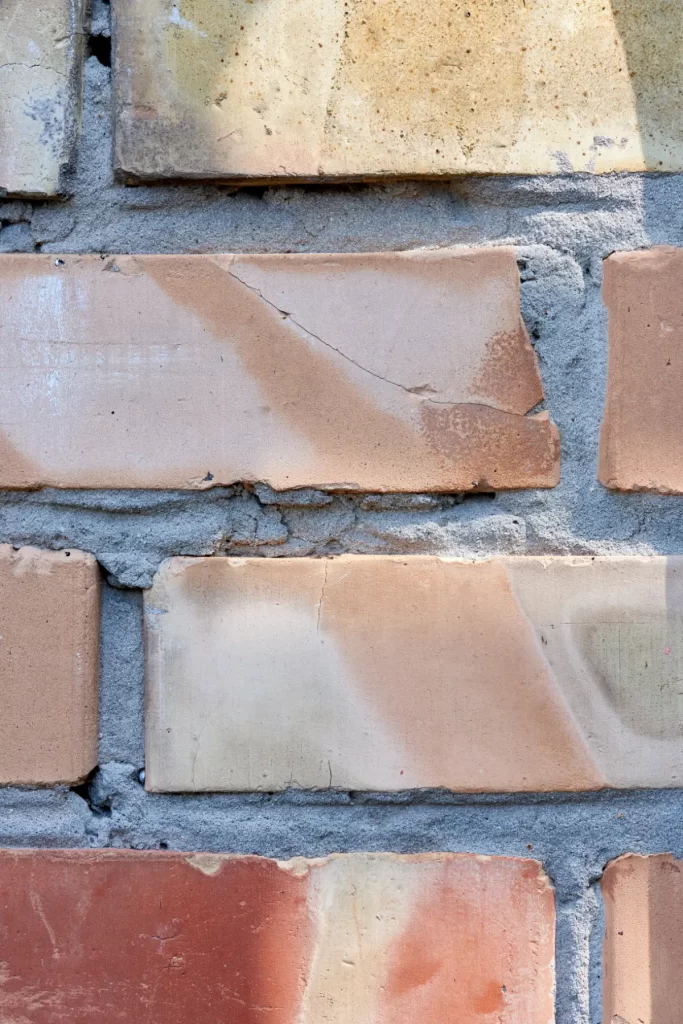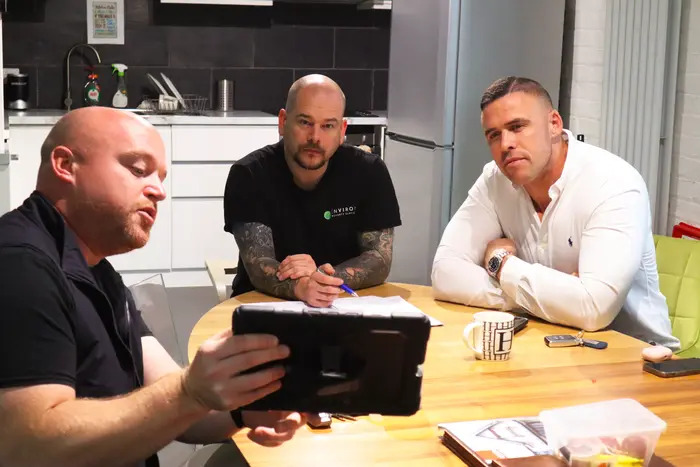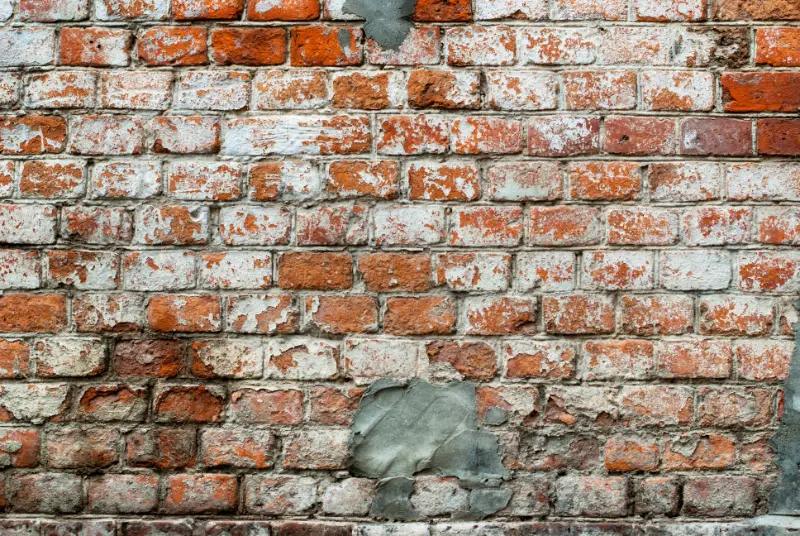Removing cement from bricks is an essential skill for anyone involved in renovation or construction. This guide offers comprehensive insights into why and how to remove cement from bricks efficiently and safely, teaching you the correct way to remove mortar without damage to newly laid bricks.
From understanding the basics of brick cleaning to exploring various removal methods and safety precautions, including the use of masking tape for precision work, this article is your go-to resource.
Discover eco-friendly solutions, professional techniques, and maintenance tips to keep your brickwork looking its best.
Removing Cement From Bricks Overview

Definition and Basics of Brick Cleaning
Brick cleaning is the process of removing dirt, stains, and difficult-to-remove substances like cement from the surface of bricks, ensuring that mortar residue from bricks is effectively cleared. This procedure is crucial to restore the aesthetic appeal of brickwork and ensure its longevity, emphasising the need to learn the proper techniques for cleaning cement from bricks to maintain the integrity of brickwork.
This process involves various techniques, ranging from gentle scrubbing with water to remove any residual to the use of specialised chemicals and tools to get cement off bricks.
Reasons for Clearing Away Cement from Bricks
Clearing away cement from bricks is essential to maintain the visual appeal and structural integrity of brickwork. Cement splatters and mortar stains can mar the appearance of a brick wall, necessitating their removal. Learning the best ways to eliminate mortar and clean cement off bricks effectively will prevent any damage from improper removal, making it crucial to employ the correct techniques.
Differentiating Between Cement, Mortar, and Concrete Residues
It’s important to distinguish between cement, mortar, and concrete residues when cleaning bricks. Cement is a binder used in mortar and concrete. Mortar is a mixture of cement, sand, and water used to bond bricks, and concrete is a robust building material.
Each requires a different approach for removal, often necessitating the use of solutions like muriatic acid for challenging to-remove substances.
The Importance of Cleaning Bricks in Renovation Projects
In renovation projects, cleaning bricks revitalises the appearance of old buildings, revealing their original charm. Clearing away cement and mortar stains from brick surfaces ensures any additions or repairs blend seamlessly with the existing structure, highlighting the importance of learning how to remove concrete and mortar effectively.
Environmental Considerations in Brick Cleaning
Brick cleaning, especially when involving harsh chemicals like muriatic acid, has environmental implications. It’s essential to opt for eco-friendly cleaning solutions and methods that minimise harm to the environment.
Methods for Clearing Away Cement from Bricks
Chemical Methods: Types and Safety
Chemical methods involve using acids or solutions to remove cement residues, often in the form of hydrochloric acid. While effective, these methods require the use of personal protective equipment (PPE) to prevent harm from harsh chemicals.
Mechanical Methods: Tools and Techniques
Mechanical removal involves physical methods such as using a chisel and hammer, wire brush, or power tools to chip away and scrub off cement. These methods are effective for removing large chunks of concrete and stubborn stains without damaging the brick.
Thermal Methods: Applications and Limitations
Thermal methods use heat to break down the bond between cement and brick, making it easier to remove. However, they are less commonly used due to the risk of damaging the bricks and are more suited to professional applications.
Eco-Friendly and DIY Alternatives
Eco-friendly and DIY solutions, such as vinegar or biodegradable detergents, offer a safer alternative for both the environment and the user. These methods are effective for light stains and do not risk damaging the brickwork.

Professional Services and When to Hire
For challenging or large-scale projects, professional brick cleaning services offer expertise and access to specialised equipment, including solutions for difficult-to-remove concrete.
Hiring professionals is recommended when dealing with extensive damage or to ensure the best outcome without risking personal injury or further damage to the brickwork.
Safety and Precautions
When undertaking the task of removing mortar and cement from bricks, prioritising safety is crucial. Here are critical pieces of advice to follow, including promising approaches to clearing mortar and preventing the use of damaging substances.
- Personal Protective Equipment (PPE): Always wear the correct PPE, such as gloves and goggles, to protect against splatters from concrete and harsh cleaning chemicals like hydrochloric acid when working with concrete. Do not use compromised personal protective equipment when handling harsh cleaning chemicals.
- Chemical Safety and Handling: Operate in well-ventilated areas when using acids or cleaning chemicals to ensure they’re safe and minimise harm to the brickwork. Use a spray bottle for application and a stiff brush for scrubbing to minimise airborne particles.
- Avoiding Damage to Brick and Mortar: This involves careful strategies to gently tap away or use specific solutions to remove challenging substances. Apply cleaning solutions gently and use tools like a wire brush carefully to prevent potential damage to bricks and mortar joints. Cover nearby areas with a tarp to catch any spillage.
- Environmental Protection Measures: Choose eco-friendly cleaning solutions when possible and ensure all waste, including diluted acid and residual concrete, is disposed of responsibly.
- Emergency Procedures and First Aid: Be prepared for accidental exposure by knowing emergency procedures and keeping first aid supplies readily available. Should cleaning chemicals come into contact with the skin or eyes, act swiftly to rinse the affected area with water.
By adhering to these guidelines, you can ensure the cleaning process is effective, safe for the individual performing the work, and minimally impactful on the environment.
Chemical Removal of Cement
Acid-Based Cleaners: Pros and Cons
Acid-based cleaners, including muriatic acid, are potent for stripping cement from bricks. While effective in using muriatic acid to remove unwanted substances, these options require careful handling due to their corrosive nature and potential to cause harm.
pH-Neutral Chemicals: When to Use
pH-neutral chemicals are safer for the user and the environment. They are suitable for cleaning delicate brickwork or when looking to minimise the use of harsh chemicals, demonstrating how it’s safe and effective to clean cement out of bricks.
Organic and Biodegradable Options
Organic and biodegradable options offer an environmentally friendly brick cleaning solution. These cleaners are less harmful but may require more time and effort to achieve the desired results, illustrating the balance between effective ways to eliminate mortar and maintaining the brick’s integrity.
Preparation and Application Techniques
Proper preparation and application techniques are crucial for effective cement removal. This includes diluting the cleaning solution according to the manufacturer’s instructions and applying it with care to avoid damaging the bricks.
Neutralising and Washing Off Chemicals
After applying chemical cleaners, it is essential to neutralise and wash off the residues to prevent ongoing chemical reactions that could damage the brickwork. This step ensures the cleaning process is completed safely and effectively.
Mechanical Removal Techniques
Manual Scraping and Chipping Away Cement
Manual scraping and chipping away cement with a chisel and hammer is a time-tested method. It allows for precision but requires patience and care to avoid damaging the bricks, which is crucial when learning how to remove concrete or clean cement off bricks, as mortar can be challenging to remove.
Using Power Tools: Safety and Efficiency
Power tools can significantly speed up the removal process. However, they also increase the risk of damage to the bricks and personal injury, necessitating the use of appropriate safety gear and techniques.
Sandblasting: Conditions for Use and Risks
Sandblasting is an effective method for removing stubborn cement stains but can be too harsh for some types of bricks. It should be used cautiously and typically by professionals to prevent damage to the brick surface.
Pressure Washing: Guidelines and Limitations
Pressure washing can be effective for removing loose cement and cleaning large areas quickly. Still, care must be taken to use water to remove any residual chemicals or cement to avoid damage. However, too high pressure can damage bricks, making it essential to adjust the settings according to the brickwork’s condition.
Choosing the Right Tool for Different Types of Bricks
Different types of bricks have varying levels of durability and porosity, influencing the choice of removal method. It’s crucial to select the right tool and technique to clean the bricks without causing damage.
Eco-Friendly and DIY Solutions
Vinegar and Other Natural Acids
Vinegar and other natural acids provide a gentle yet effective way to remove light cement stains. They are safe for both the environment and the user, making them a popular choice for eco-conscious individuals.
Biodegradable Detergents
Biodegradable detergents are another eco-friendly option for cleaning bricks. They are effective for removing light to moderate stains without using harmful chemicals.
Heating Methods: When and How
Heating methods, such as using a heat gun, can soften cement for easier removal. This method is best used with caution to avoid overheating and damaging the bricks.
Aftercare and Maintenance of Cleaned Bricks
After the effort to get cement from bricks and tackle concrete splatter from brick surfaces, the focus shifts to preserving the brickwork’s integrity and appearance. Sealing the bricks can guard against moisture but requires careful selection to avoid trapping it, which could lead to damage. This is particularly important for newly laid bricks requiring protection from the elements.
For those considering a fresh coat, repainting with the right type of paint is critical. Water-based options that allow the bricks to breathe prevent moisture trapping.
Regular maintenance, including gentle cleaning to gently tap away any lingering debris or mortar residue, is essential for long-term upkeep. Employing weatherproofing measures further protects the brick from harsh conditions without compromising its natural texture. Moreover, to prevent future cement stains, employing strategies during construction works, such as using protective gear and ensuring clean mortar off bricks without causing harm, is advisable. This involves learning how to remove concrete without damaging the brick’s surface.
These steps not only maintain the brickwork’s aesthetic appeal but also its structural resilience, ensuring it remains in pristine condition for years to come, including along window sills.
Professional Services and Consulting
Understanding the nuances of maintaining and restoring the structural and aesthetic integrity of brickwork, particularly in historic or period properties, requires a specialist approach, including mastering ways to eradicate mortar and clean cement out of bricks.
Environ Property Services, with its extensive experience and expertise in the field of restoration and conservation, offers a comprehensive suite of services designed to address these very needs and specialises in how to remove concrete and mortar residue from bricks. Their commitment to preserving the historic features and fabric of buildings, using matching materials and original building techniques, ensures your property retains its character and value.

When it comes to removing mortar stains, cleaning concrete without damaging the bricks, or addressing more complex challenges such as damp proofing and structural repairs, Environ Property Services stands out.
Their approach is not just about the restoration of buildings but about bringing spaces back to life in a manner that respects their historical significance and architectural integrity, ensuring that new constructions blend seamlessly with the original brickwork. This is particularly important for Edwardian and other period properties, where the wrong restoration techniques, such as failing to remove the cement properly, can lead to irreversible damage.
Choosing Environ Property Services means opting for a team that views their work through the lens of craftspeople rather than mere contractors. Their detailed understanding of period properties, from brickwork to timber sash window restoration and beyond, ensures every aspect of your property is treated with the care it deserves.
Moreover, their emphasis on using the suitable materials and techniques, such as how to remove concrete without harm, not only preserves the look and feel of your property but also its structural health.
In a city as rich in history as London, where the architecture tells stories of centuries past, ensuring the longevity and beauty of your property is paramount.
In conclusion, for those who value the preservation of their property’s historical and architectural integrity while ensuring it meets the demands of modern living, Environ Property Services offers a blend of expertise, passion, and quality that is hard to match. Their approach not only respects the past but also embraces the future, ensuring your property remains a testament to timeless beauty and durability.

